The Game of War: An Overview
Chess with networks
Alexander R. Galloway
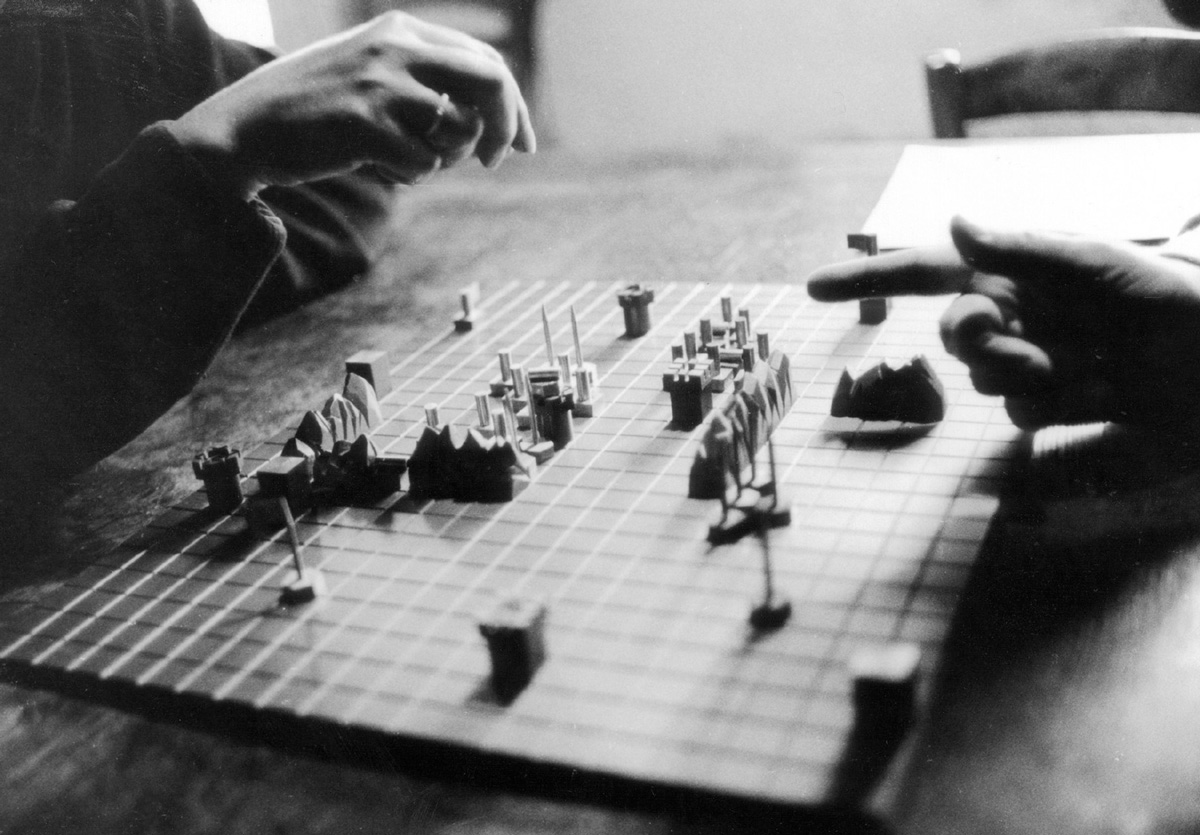
In France, the 1960s lasted until about 1974. It was a decade quick to begin and reluctant to end. Emblematic of the period were militant collectives of various kinds, such as the Tel Quel group, or the Situationist International. But around April or May of 1974—as Roland Barthes accompanied the Tel Quel editors to China to witness firsthand the Maoist theory they had been espousing back home, only to become entirely disillusioned with this new fad of militancy—the entire progressive theoretical framework of the 1960s began to slip away and become irrelevant. The Situationist International disbanded in 1972. Philippe Sollers and Julia Kristeva turned to theology, to the New Philosophers, and in 1977 replaced their former pro-Maoist stance with a rather unexpected pro-Americanism.
French Situationist Guy Debord never recovered from the crisis of the 1970s. His late life was beset by chronic illness brought on by an ever-growing appetite for food and drink. He became more nostalgic and self-absorbed, mixing manifesto with memoir. By the late 1970s, his former glory as a radical filmmaker and author had faded. “The cinema seems to me to be over,” he wrote in a 1978 letter. “These times don’t deserve a filmmaker like me.”[1]
Debord sequestered himself with his wife, Alice Becker-Ho, in the remote region of Auvergne. They enjoyed playing games together and had tried their hands at Djambi, a board game sent as a gift by Debord’s benefactor Gérard Lebovici. Djambi is a distinctly late-modern game. It proceeds not bilaterally like chess but multilaterally with four players. The game tokens are not modeled on a medieval court of kings, queens, knights, and bishops, but instead on the various political actors that make up the contemporary world: the news reporter, the provocateur, the activist militant, and the assassin.
“Thanks for Djambi,” Debord replied to Lebovici in a letter otherwise disdainful of the game. “The rules suffer from a contradiction between the game’s totalitarian goal and its representation of the struggles of an ‘advanced liberal democracy.’”[2] The ridiculous subtext of Djambi was clear to Debord: how could a board game ever correctly model complex political dynamics such as those existing in France in the 1960s and 1970s? What is to be done when control and organization are no longer hierarchical and repressive, but instead have migrated into the form of flexible, distributed networks? Even if it were possible to model such a scenario in a game, thought Debord, Djambi wasn’t it.
He responded with a game of his own. In January 1977, Debord founded the Society for Strategic and Historical Games. The Society had an immediate goal: to produce a “Game of War” which Debord had already designed in his head in the 1950s. Inspired by the military theory of Carl von Clausewitz and the European campaigns of Napoleon, Debord’s game is a chess-variant for two players. “The surprises of this [game] seem to be inexhaustible,” he confessed later. “It might be the only thing in all my work—I’m afraid to admit—that one might dare say has some value.”[3]
With the assistance of Lebovici, Debord first produced the game in a limited edition during the summer of 1977. The edition included an 18-by-14-inch game board and player tokens fabricated in silver-plated copper by the “intrepid” Mr. Raoult, a Parisian artisan whom Debord admired and trusted implicitly. By the end of June 1978, after delays due to poor health, Debord finished drafting a written copy of the game rules. “I am sending you the rules soon,” he wrote to Lebovici. “The juridico-geometric writing style has cost me innumerable headaches.”[4]
The game board is divided into a northern territory and a southern territory, each with a single mountain range of nine squares and a mountain pass. Each faction has two arsenals, three forts, nine infantry, four cavalry, two artillery cannons (one footed and one mounted), and two transmission relay units (one footed and one mounted). Each combat unit has an attack and defense coefficient, and may move either one or two squares per turn depending on the type.
Arsenals radiate lines of communication vertically, horizontally, and diagonally. In addition, transmission relays propagate any line of communication aimed at them. All units must remain in direct connection with their own lines of communication, or be adjacent to a friendly unit in communication. If stranded, a unit goes offline and becomes inert.
The game proceeds in turns. A player may move up to five units each turn, followed by a single attack against an enemy unit. An attack is determined by summing all the offensive power in range of an enemy target square, then subtracting this number from a summation of all the defensive power supporting the same target square. Offensive and defensive power emanates from a unit in a straight line, either vertically, horizontally, or diagonally. If the offensive power is less than or equal to the defensive power, the unit resists. If the offensive power is two or more, the unit is destroyed. A player wins the game by either destroying all enemy combat units, or destroying the enemy’s two arsenals. Alternately, if both sides agree to quit, the game ends in a draw.
While distilled to a simple essence, Debord believed that the Game of War simulated all the necessary principles of war. He did admit, however, that three things were missing from his near-perfect game: climate conditions and the cycles of day and night; the influence of troop morale; and uncertainty about the exact positions and movements of the enemy. “That said, one may assert that the [game] exactly reproduces the totality of factors that deal with war, and more generally the dialectic of all conflicts.”[5] Debord’s ambitions for the game were grandiose. By evoking the “dialectic of all conflicts,” he was appealing backward to the power of 1968 and the days of the Situationist International, but also forward to the game’s future potential in training and cultivating a new generation of militants.
But the game was missing more than just climate conditions. In fact, viewed against the silhouette of Debord’s other work, it is surprisingly square. The spirit of “wandering” or “hijacking,” from the Situationist days, is absent in the game. There is no mechanism for overturning society, no temporary autonomous zones, no workers’ councils, no utopian cities, no imaginary landscapes of desire, no cobblestones, and no beach; only grids of toy soldiers fighting a made-up war in a made-up world.
It invites the question: Why is this game relatively unadventurous, while Debord’s other work is so experimental? Can this be explained through an analysis of media formats, that Debord had a certain panache for radical filmmaking and critical philosophy, but lapsed back into the predictable habits of the bourgeois parlor game when he tried his hand at game design? Why in 1978 would he make a game that had more in common with Napoleon’s 1806 Battle of Jena than Debord’s own 1968 Battle of Paris? Did Debord simply lose his radical zeal late in life, his Hegelianism finally winning out over his Marxism? In short, why the Game of War and not Djambi?
Debord admitted that the game was bound to a historical period: “This doesn’t represent wars of antiquity, nor those of the feudal period, nor modern warfare refashioned by technology after the middle of the nineteenth century (railways, machine guns, motorization, aviation, missiles).”[6] So the Game of War is indeed historically specific, only for a century past (the eighteenth) rather than the present day. In his own comparisons made between the game and chess, he continues the description of historical specificity. He positions chess firmly in the classical period of kings and corporal fiat, while the Game of War belongs to a time of systems, logistical routes, and lines of communication. In chess, spatial relationship between pieces are paramount; the “knight’s tour,” for instance, serves as a classic mental projection of pattern and recombination. In the Game of War, Debord maintained this attention to spatial relationships, but added a degree of complexity. The “liaisons” in the Game of War are not simply the projections of possible troop maneuvers, but a communicative apparatus linking together far-flung fighting divisions. If chess’s king is an intensive node, one that must be fortified through the protection of its allied footmen, then Debord’s arsenals are extensive nodes. Yes, they too must be protected, but they also serve as the origin point for a radiating fabric of transition. In chess “the king can never remain in check,” but in the Game of War “liaisons must always be maintained.”[7]
Chess presents a set of challenges in proximity to a consecrated corpus, a prize, but the Game of War is a game of rhizomatic space itself, the assets of war strung out in long lines and held together by a tissue of interconnection. The lines of communication are crucial. So while the game is in some senses a throwback to the Napoleonic era of pitched battles and otherwise conventional warfare, it is at the same time a window into the new flexible, information-based wartime tactics of the new millennium. The Game of War is, in essence, “chess with networks.”
An English edition of the Game of War, accompanied by a game board, counters, and a rule book, has recently been issued by Atlas Press in the UK. See www.atlaspress.co.uk for more information.
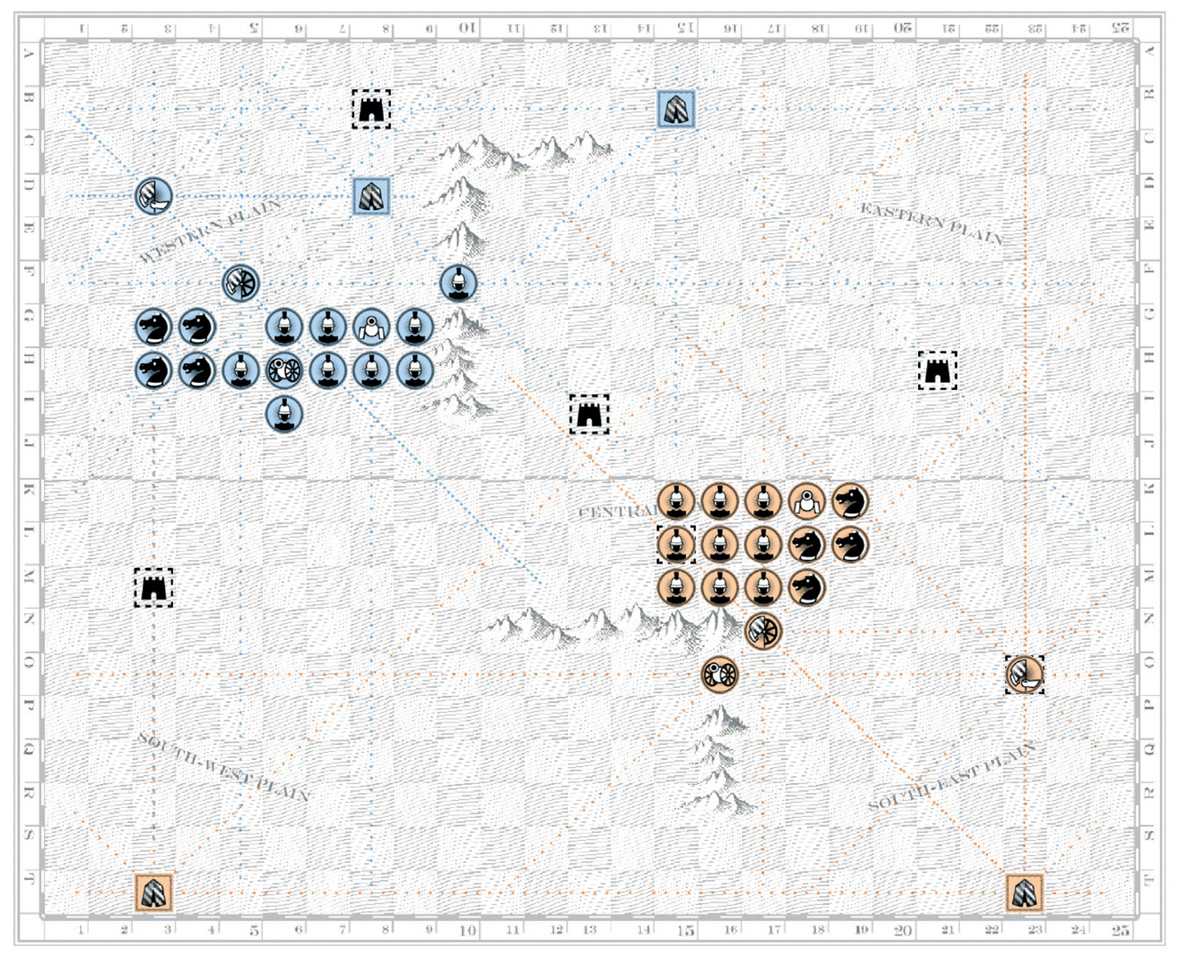
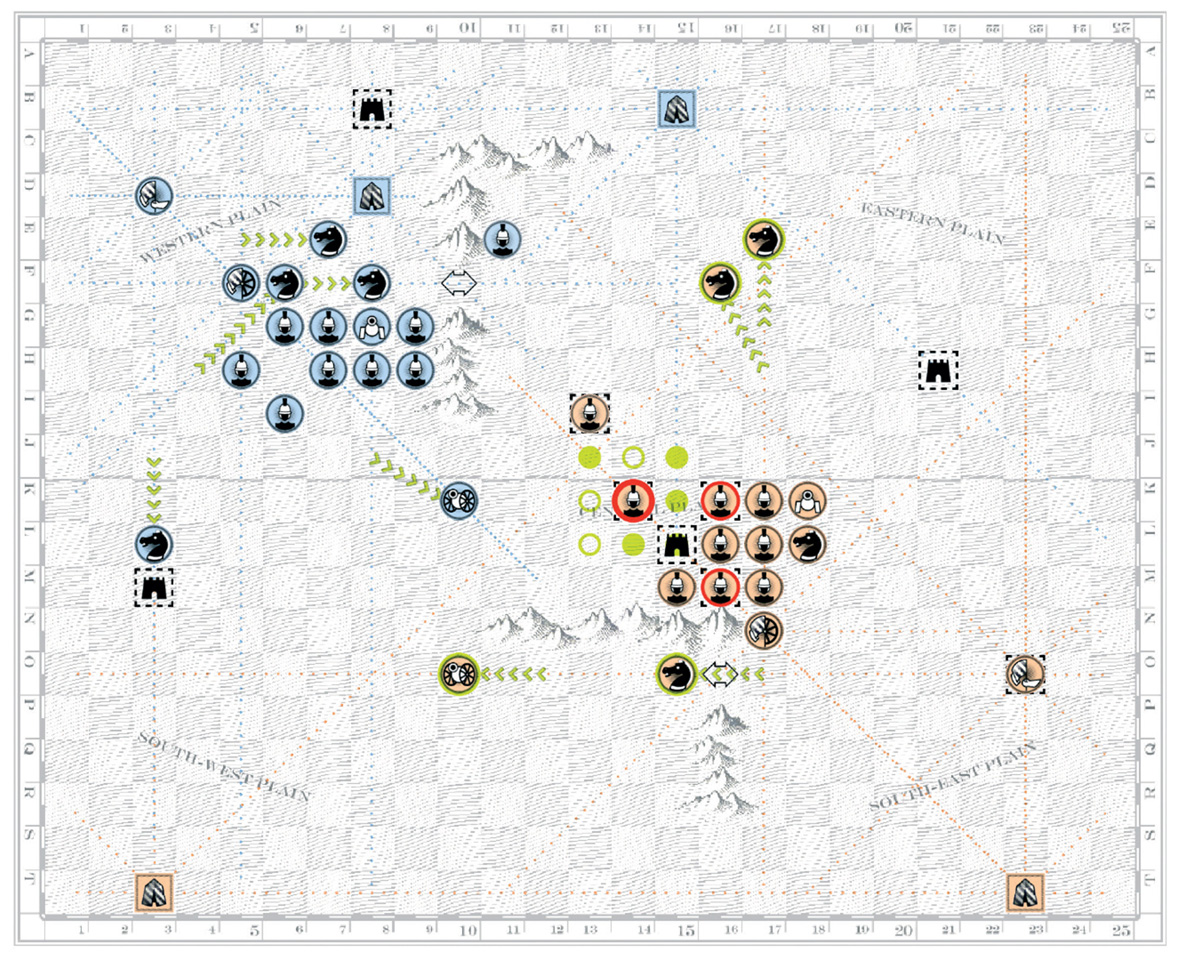
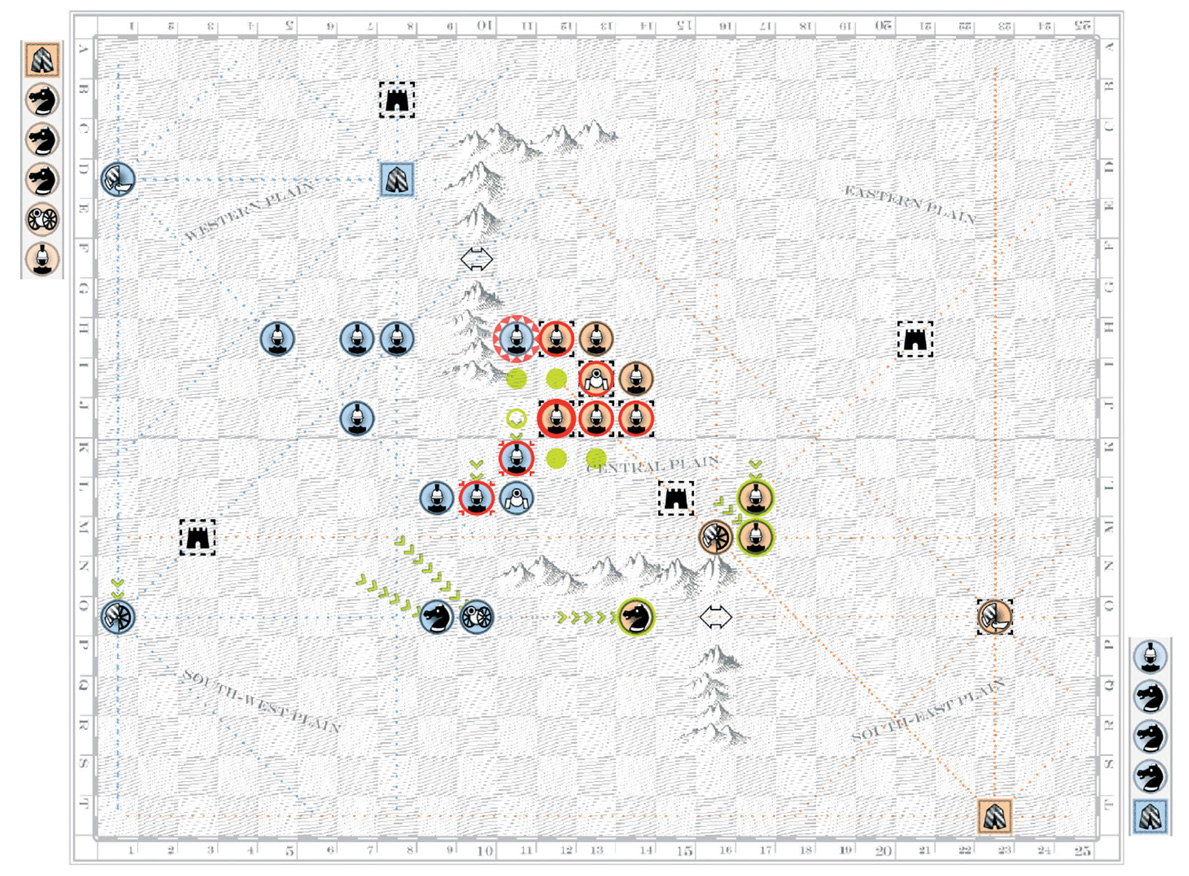
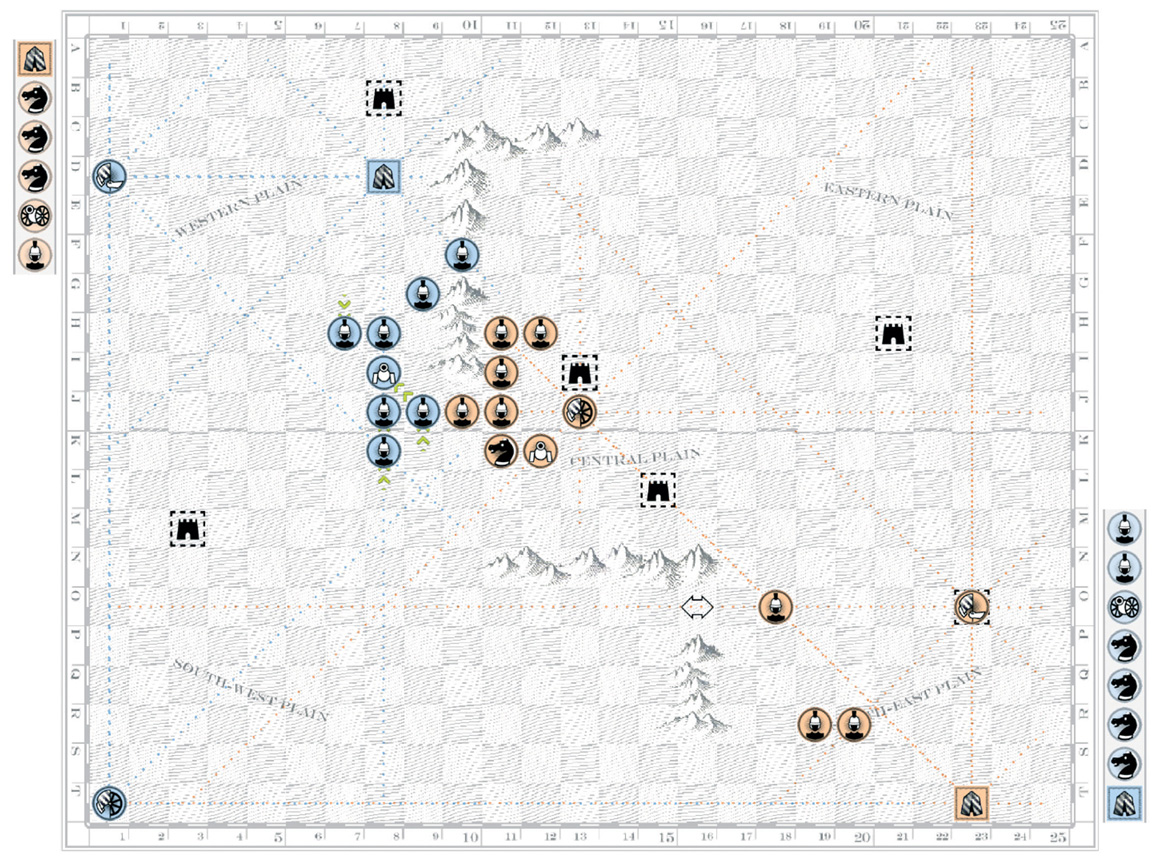
- Guy Debord, Correspondance, vol. 5: Janvier 1973–Décembre 1978 (Paris: Librairie Arthème Fayard, 2005), p. 451.
- Ibid., p. 462.
- Guy Debord, Panégyrique, vol. 1 (Paris: Gallimard, 1993), p. 70.
- Debord, Correspondance, vol. 5, op. cit., p. 466.
- Alice Becker-Ho and Guy Debord, Le Jeu de la Guerre: Relevé des positions successives de toutes les forces au cours d’une partie (Paris: Gallimard, 2006), p. 151.
- Ibid., p. 149.
- Ibid., pp. 165–166.
Alexander R. Galloway is an author and programmer. His latest project is a computer-game version of Debord’s Game of War.
Spotted an error? Email us at corrections at cabinetmagazine dot org.
If you’ve enjoyed the free articles that we offer on our site, please consider subscribing to our nonprofit magazine. You get twelve online issues and unlimited access to all our archives.